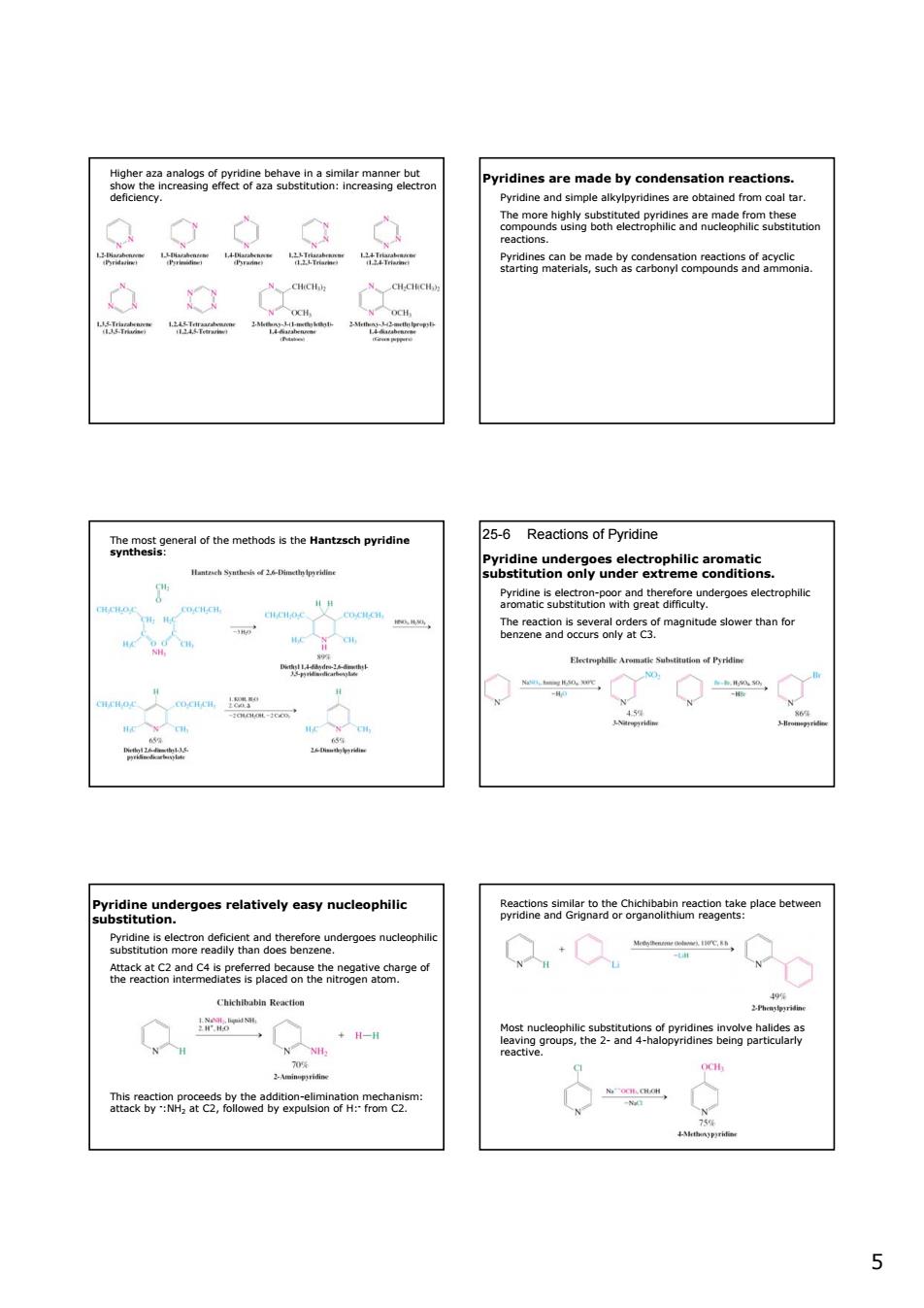正在加载图片...

,Ra8goo Pyridines are made by condensation reactions. dines are ob 品鸟品会 mnae2gnuebpndcgmarteGeteatete s i the Han 25-6 Reactions of Pyridine 4 e空 mcegeRo26oegaponaenecha ◇◇ 5 5 Higher aza analogs of pyridine behave in a similar manner but show the increasing effect of aza substitution: increasing electron deficiency. Pyridines are made by condensation reactions. Pyridine and simple alkylpyridines are obtained from coal tar. The more highly substituted pyridines are made from these compounds using both electrophilic and nucleophilic substitution reactions. Pyridines can be made by condensation reactions of acyclic starting materials, such as carbonyl compounds and ammonia. The most general of the methods is the Hantzsch pyridine synthesis: 25-6 Reactions of Pyridine Pyridine undergoes electrophilic aromatic substitution only under extreme conditions. Pyridine is electron-poor and therefore undergoes electrophilic aromatic substitution with great difficulty. The reaction is several orders of magnitude slower than for benzene and occurs only at C3. Pyridine undergoes relatively easy nucleophilic substitution. Pyridine is electron deficient and therefore undergoes nucleophilic substitution more readily than does benzene. Attack at C2 and C4 is preferred because the negative charge of the reaction intermediates is placed on the nitrogen atom. This reaction proceeds by the addition-elimination mechanism: attack by - :NH2 at C2, followed by expulsion of H:- from C2. Reactions similar to the Chichibabin reaction take place between pyridine and Grignard or organolithium reagents: Most nucleophilic substitutions of pyridines involve halides as leaving groups, the 2- and 4-halopyridines being particularly reactive